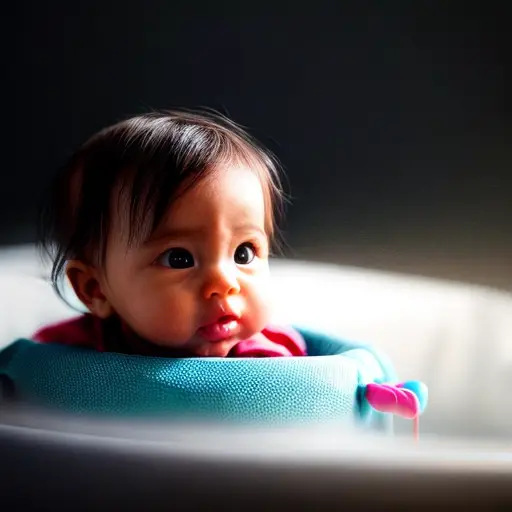Understanding Attachment: The Foundation of Child Development
Attachment is like that one friend who always has your back, even when you accidentally wear mismatched socks to a fancy event. In child development, attachment refers to the deep emotional connection between a child and their primary caregiver. It's like a super glue that sticks them together, creating a solid foundation for the little one's growth and development. This attachment bond is formed through consistent love, care, and responsiveness from the caregiver, making the child feel safe and secure. It's like having a trusty sidekick who always has your favorite snack ready and knows exactly how to make you giggle. So, whether it's a parent, grandparent, or even a fluffy teddy bear, attachment is the secret ingredient that helps children navigate the world with confidence and a smile.
The Importance of Secure Attachment: Nurturing Healthy Relationships
An interesting fact about attachment in child development is that the quality of a child's early attachment experiences can have long-lasting effects on their social, emotional, and cognitive development. Research has shown that secure attachment, where a child feels safe, loved, and supported by their primary caregiver, can lead to positive outcomes such as better self-esteem, stronger relationships, and improved academic performance. On the other hand, insecure attachment, characterized by inconsistent or neglectful caregiving, can result in difficulties with emotional regulation, social interactions, and even mental health issues later in life.
Imagine a world where relationships are as stable as a Jenga tower built by a professional architect. Well, secure attachment in child development is like the sturdy foundation of that tower. It sets the stage for healthy relationships later in life. When children form secure attachments with their caregivers, they learn how to trust, communicate, and regulate their emotions. It's like having a secret decoder ring that helps them navigate the complex maze of human connections. These little ones grow up to be adults who can build strong, supportive relationships, like a team of synchronized swimmers gracefully gliding through the water. So, let's nurture secure attachment in children, because it's the key to a future filled with love, laughter, and a whole lot of Jenga towers that never topple.
Attachment Styles: Exploring Patterns of Emotional Connection

Attachment styles are like the unique dance moves that individuals bring to the emotional tango of relationships. In child development, attachment styles refer to the patterns of emotional connection that children form with their caregivers. These styles can have a profound impact on how children perceive themselves and others, shaping their future relationships. The first attachment style is secure attachment, where children feel safe and secure with their caregivers, allowing them to explore the world with confidence. It's like having a cozy blanket that wraps around them, providing comfort and support. On the other hand, there's anxious attachment, where children constantly seek reassurance and worry about being abandoned. It's like having a clingy shadow that follows them everywhere, making it difficult to trust and feel secure. Another attachment style is avoidant attachment, where children distance themselves emotionally from their caregivers, fearing rejection or vulnerability. It's like wearing an invisible force field that keeps others at arm's length, preventing deep emotional connections. Lastly, there's disorganized attachment, which is a mix of conflicting behaviors, resulting from inconsistent or abusive caregiving. It's like being caught in a chaotic whirlwind, never knowing which way is up. Understanding these attachment styles can help us support children in developing healthy emotional connections, like teaching them new dance moves that lead to harmonious relationships.
Implications of Insecure Attachment: Long-term Effects on Child Development
Fun fact: Did you know that babies can form attachments to inanimate objects? This phenomenon, known as 'transitional objects,' often involves a special blanket, stuffed animal, or even a pacifier. These objects provide comfort and security, helping children navigate the world and cope with separation anxiety. So, if you see a child carrying around their favorite teddy bear, know that it's not just a toy – it's their trusted companion in the journey of growing up!
Insecure attachment in child development is like a crack in the foundation of a building, slowly weakening its structure over time. When children experience insecure attachment, it can have long-term effects on their overall development. For instance, children with anxious attachment may struggle with low self-esteem and have difficulty regulating their emotions. It's like carrying a heavy backpack filled with self-doubt and anxiety wherever they go. Similarly, children with avoidant attachment may struggle with forming close relationships, as they have learned to keep others at a distance. It's like wearing a mask that hides their true emotions, making it challenging to connect on a deeper level. Additionally, children with disorganized attachment may experience difficulties with impulse control and have a higher risk of developing mental health issues. It's like walking on a tightrope without a safety net, constantly teetering between chaos and stability. Recognizing the implications of insecure attachment allows us to provide the necessary support and interventions to help children build secure and healthy emotional connections, like repairing that crack in the foundation and ensuring a strong and stable future.

